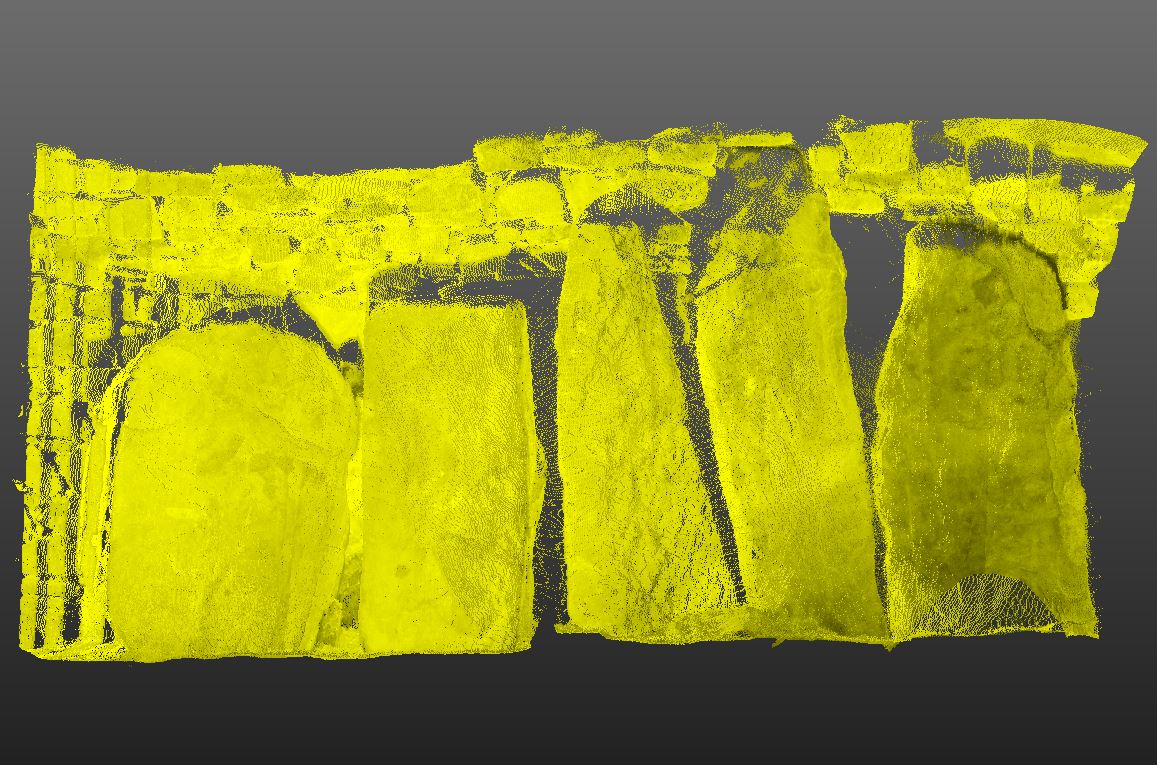Knowth Passage Tomb
building the knowth Passage tombs
This project was initialized as a proof of concept to be presented to the OPW for upcoming tourism attractions. The project was thought up during the height of VR headset hype. The idea was lightweight assets to play on VR headsets either at tourist sites or to be played at home to drum up interest in some lesser known, but impressive, archaeological monuments.
With proof of concept and staying lightweight in mind, a stone by stone reconstruction was taken off the table. The focus was instead placed on extracting workable chunks and getting the project moving,
The Knowth production process was an extension of the pipeline developed for the 3D icons project. High density point cloud data of a large majority of the Knowth site had been previously gathered. The point cloud data was brought into Realworks to be cleaned and segmented in to workable pieces.
The passage had to be separated in to pieces in such a way that we could effectively hide as many seam lines as possible upon placing the retopologised models back together. As well as breaking them in to roof, floor and wall sections.
The segmented pointclouds were then meshed, decimated, and retopologised High detail maps were extracted from the high resolution model to apply to the low poly mesh.
One extra process was adding fringes of edge loops extending from the boundary of each passage segment to allow for overlapping of the retopologised passage segments. This would allow for more accurate lighting, a more immersive experience as well as a cleaner final product.
Given the low lighting and tight space of the passage, as well as time constraints/ lack of of access to the passages it wasn’t viable to capture photographs to use in completely photo-realistic texturing.
Instead we gathered sample photography from several points throughout the passages and used these images to build a swatch for the stone surfaces. This swatch was then used to make informed decisions while building a material stack in Substance Painter to replicate existing textures and build new ones where needed.
There were several months spent during the project building and testing the passages in the Unity game engine for interactive VR display. There was even a relatively successful alpha product tested at a conference by 60~ students and just under 20 academics and field experts. Feedback from that test proved that any installation of a VR experience would need several headsets, otherwise it would become a bottleneck in any tour. These headsets would need constant supervision as well as maintenance and cleaning. Further, staff would have to be trained in case of hardware or software fault. There was the added issue of universal accessibility, not everyone can use a VR headset. From our testing alone we saw many users above the age of 40 experiencing nausea and discomfort, both common side effects in early VR that have yet to be completely solved. Hygiene was another issue, the headsets have to be cleaned after each user, not at all practical for a short form tour.
With all of that feedback in mind, it became abundantly clear that the end product should be displayed on a large screen in front a group of people, with an informed guide discussing what is being displayed. While this approach was not as flashy as the original idea, it does reach the original target audience and actually expands in to a more general audience, boosting potential attraction of new tourists.
Below are images of the original VR project. Low resolution, hand painted textures and all.
Post Alpha
Following the Alpha Tests the project entered a new phase. With a larger display format we needed to reassess the texture definition, as well as its style. The stylised, hand painted textures seen above did not hold up to the planned large HD display. Instead the plan changed to building PBR materials for each segment of the passage, overlaying any existing normal and ambient occlusion maps to recreate surface textures. Ideally, I would have preferred to rebuild the entire passage model at a higher resolution, isolating the supporting walls from the individual standing stones. Unfortunately our clients were working towards a tight deadline. We did isolate several key stones to highlight their artwork. These are seen below, along with other pertinent images. Once the end result of the project is open to the public I’ll be able to upload the full video fly-through.





























